Looking for different ways to make coffee at home? Read this article for each method that makes coffee-making enjoyable.
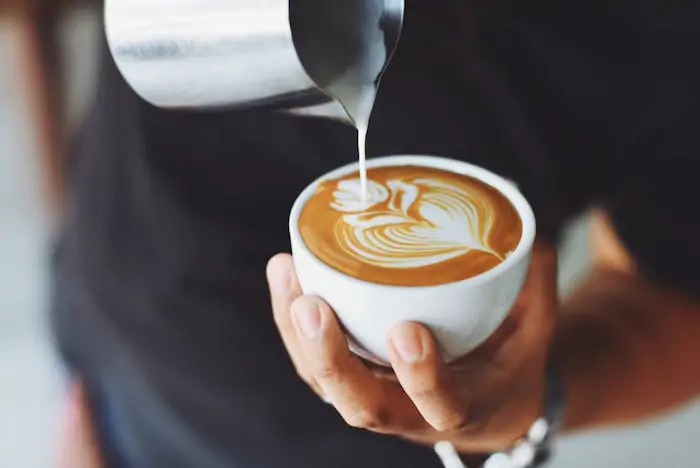
For centuries, coffee enthusiasts have been looking for different ways to extract the finest flavor from organic coffee beans. In their quest to improve the quality of Java, a plethora of coffee making equipment and accessories have been invented.
From manual brewing methods to automatic coffee makers with smart controls, the different ways to make coffee at home have highly revolutionized in the last few years. Although the methods vary, they all have a common objective – deliver a cup of purely aromatic and flavorful coffee.
It boils down to personal preferences, taste, technique, and time. While the older generation still swears by the manual brewing method for more control over the coffee-making process, the younger lot prefers the convenience offered by the automatic ways to brew coffee in smart coffee makers.
If you ask your Italian grandmother, she is sure to argue brewing with a Moka pot delivers the best tasting coffee in the world. The growing interest in gourmet-style of coffee making has led to the discovery of different ways of making coffee at home
While I totally stand by different ways to make coffee at home that please taste buds and awaken the senses, I will touch on the most popular styles of coffee making in this article.
1. Pour Over/ Drip Method
The drip method using a paper filter or coffee cone is one of the oldest and cheapest ways to make coffee at home. The brewing method is also very simple and straightforward.
You first need to ground the coffee beans evenly. Then, pour hot water over the ground coffee placed in a paper filter or cone.
The gravity does its job and the brewed coffee passed through the grounds and drips into the pot or cup. The coffee cones are usually made of stainless steel, glass, or ceramic material. The shape of the cone and the type of filter used to influence the flavor.
Grind size: Medium-Fine (you feel a little smooth when you rub with the finger)
Brew time: 2.5 to 3 minutes
Ratio: 1:16
Flavor: pure and strong
What I like about the Pour Over/ Drip Method
The sheer pleasure of making coffee in the traditional way cannot be expressed in words. There is something very authentic about this method. To get the best results, you must grind the coffee beans medium-fine to coarse texture.
It takes about 3 minutes to brew coffee in the drip method and it is easy to clean. This is also a highly portable device and you can carry coffee grounds, cup, cone, and filter with you while traveling.
What I don’t like about the Pour Over/ Drip Method
It takes the right size of coffee grounds and lots of patience to create that perfect cup of morning Joe or wake-up coffee. If you think you can manage to do this every morning before leaving for work, you are probably lying to yourself. Furthermore, the extra accessories needed for brewing may make this an expensive hobby.
2. Pour Over: Chemex
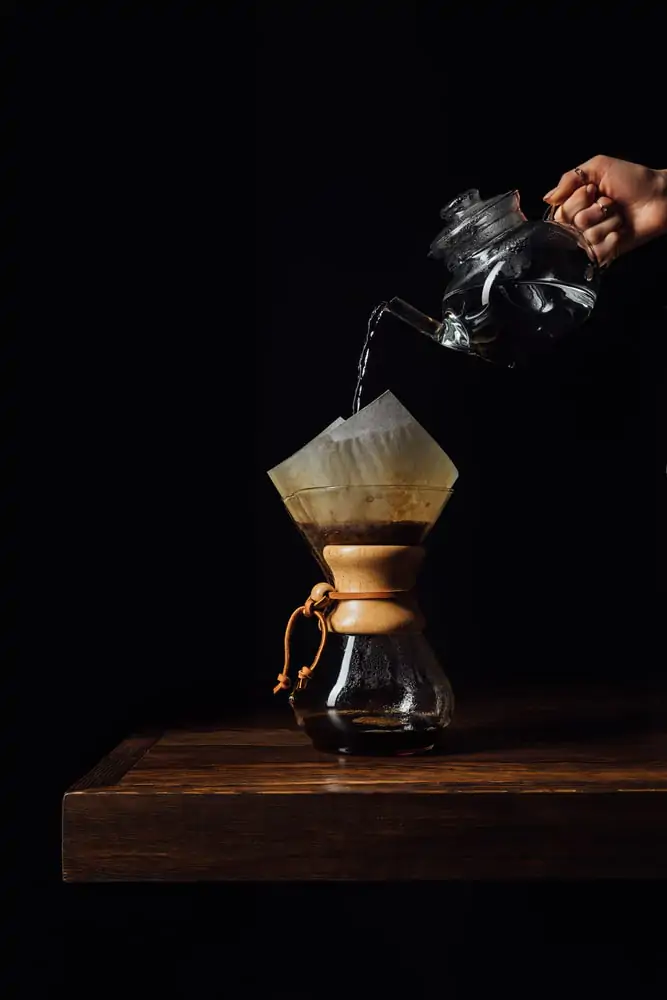
If you wish to impress your date with your coffee-making skills then Chemex can create the magic and bring out that 90s gentleman in you! Chemex is an elegant and well-built pour over flask that was developed in 1941 by Dr. Peter Schlumbohm.
This coffee brewing method uses specially created Chemex paper filters that are about 20-30% thicker and heavier than the standard filters. To make coffee, wet the filter and add the coffee grounds. Now pour hot water slowly and let the brewed coffee drip into the pot.
Grind size: Similar to table salt
Brew time: 3-4 minutes
Ratio: 4-5 tablespoon in 2.5 cups of water yields 6 cups
Flavor: balanced, refined, floral, and sweet notes
What I like about the Pour Over/ Drip Method
It’s a fun way to experiment with different varieties of coffee beans and I love to impress my guests with this magnificent cup of coffee. I love the fact that it can brew multiple cups at a time. If you love a dash of sweet notes in your coffee, you must try the Chemex as the bonded filter hold the oils and sediments, preventing the brew from turning bitter.
What I don’t like about the Pour Over/ Drip Method
You need a lot of accessories which makes this an expensive and time taking way to brew coffee at home. Maintaining the vessel is also not easy and you will need a buy a long-handled brush to clean it properly.
3. French Press
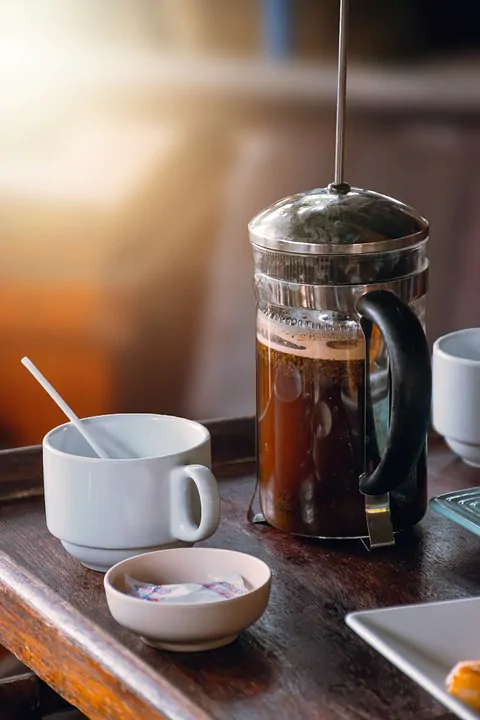
I am sure all of you have that one friend who is ready to roll at any time and a French Press is like that awesome buddy. This innovative coffee brewing method was invented in 1929 and since then it has been one of the fastest methods to brew superior quality coffee every time.
In the French press pot, the coarsely ground coffee is soaked, steeped, and then strained in boiling water. This results in better diffusing the aromatic essential oils, antioxidants, and caffeine to discover the purest flavors.
Grind size: Coarse, like that of raw sugar
Brew time: 4 minutes (don’t let the coffee sit in the press for long or it will get bitter)
Ratio: 60-70 grams in 1 liter of water
Flavor: pure and clean
What I like about the French Press
The rich flavor and luscious taste linger long after you have sipped on a cup of a French press. Besides the taste, the coffee-making experience is also out-of-the-world as it gives full control over the brew time, strength, and taste. With a French press, you can make 8 cups of great coffee in 5 minutes.
What I don’t like about the French Press
It’s not the preferred way to make coffee on busy mornings. You need to constantly monitor the process and be very careful about the water temperature and grind size. You just can’t let it brew and go for a shower. Cleaning up is not easy if you don’t have a garbage disposal because putting grounds in the sink may cause a clog on the pipe.
4. AeroPress
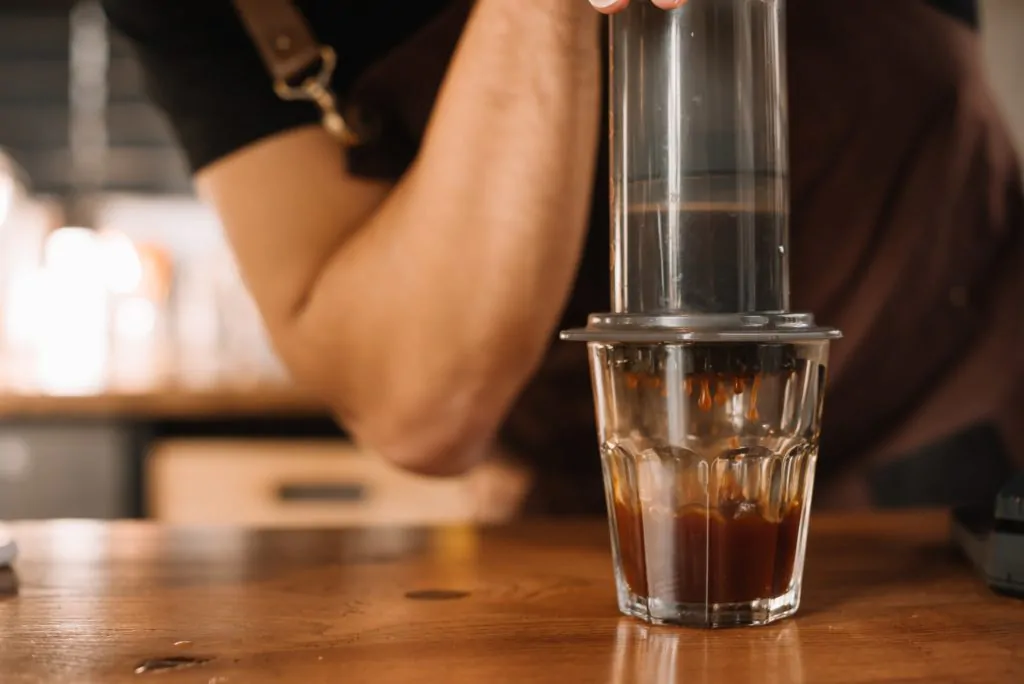
This is a relatively new and cool way to make coffee at home. Created by Alan Adler, the first AeroPress (See Review) was launched in 2005. It is made of plastic and constitutes three parts. The filter is placed inside the coffee basket in the lower section of the brew chamber.
When hot water is added to the coffee grounds, they are completely immersed in water. A plunger is pressed down to create a high level of pressure that results in extracting the intense flavor. The strength and flavor of the coffee are similar to that of espresso.
Grind size: fine to medium (Finer than salt)
Brew time: 1-2 minutes
Ratio: 17 grams of coffee grounds in 220 grams of water
Flavor: sweet, espresso-style, full-bodied
What I like about AeroPress
The AeroPress is highly portable and it works great for camping outdoors and impressing your friends. Cleaning up is super easy as you just need to throw out the puck and rinse, that’s it! Due to the high intensity of pressure, it may sometimes take less than 2 minutes to brew.
Not to forget that the resulting brew is super delicious!
What I don’t like about AeroPress
You will need to buy separate filters for the AeroPress, however, this is not much of a trouble, thanks to the Internet. It can brew only one cup at a time, so not an ideal solution if you want to enjoy a coffee binge on the weekends.
Read our AeroPress Review
5. Stovetop Moka Pot
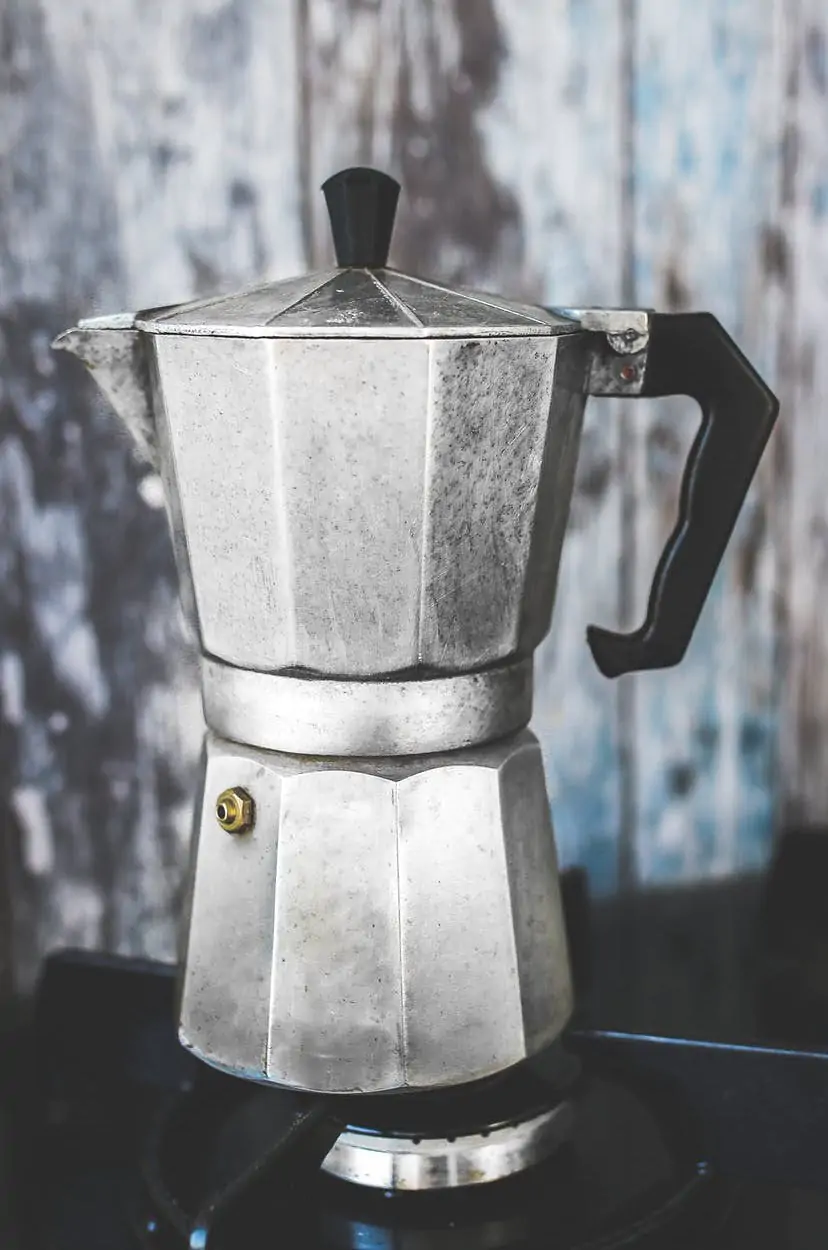
If you want to make authentic coffee as the Italians did some 80 years ago then a stove pot Moka is the way to go! Patented by Alfonso Bialetti in 1933, this style of coffee making uses steam pressure from hot water to pass through the lower section of the pot that contains coffee grounds.
Well-design steam pressure is capable of creating really good pressure and the coffee sits on the higher chamber. Some of the popular brands are Pedrini, Bialetti, and Kabalo.
Grind size: Fine
Ratio: 17-22 grams of coffee in 220 grams of water
Brewing Time: 5 minutes
Flavor: strong, espresso-style coffee,
What I like about Stovetop Moka Pot
This style of brewing can produce single or double shots of Java. Moka pot requires less maintenance as it is easy to clean and highly portable too. You can take it with you while camping or traveling. If you want one more reason to buy a Stovetop Moka Pot, it’s the experience for sure!
What I don’t like about Stovetop Moka Pot
This is a complex process that you may enjoy in the weekends or at leisure but is certainly not the thing for busy weekdays.
See Also: MOKA POT SIZE GUIDE: CHOOSING THE RIGHT MOKA POT BY SIZE
6. Siphon
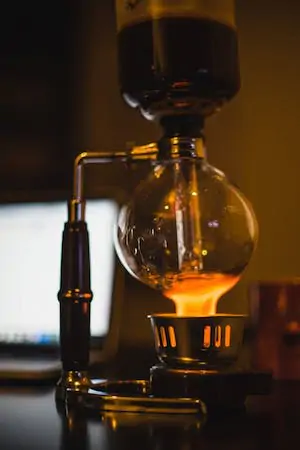
This is a vacuum-based, fun way to make coffee and home and make your guests go ow’. Invented in Germany around the 1840s, and it works on the mechanism of forcing very hot water inside the chamber containing coffee grounds.
The coffee grounds go in the upper vessel and the pressure created by hot water immerses the grounds completely. When the pressure is removed, the gravity does its job and pushes the brew through the filter into the cup.
Grind size: Medium to Medium fine (feel a little smooth when you rub with the finger)
Ratio: 20-25 grams in 12 ounces of water
Brewing time: 6 minutes
Flavor: delicate and subtle
What I like about the Siphon
If you are looking for a dramatic way to make great coffee that will have people talking, this is for you. This is a fun method that gives you full control over the heating and steeping time. The full immersion of coffee grounds in hot water lets you enjoy a full spectrum of flavors.
What I don’t like about the Siphon
The equipment is delicate and not easy to store. The cleanup process is fussy and takes a lot of time. You will need to stick around for at least 10 minutes to get that perfect brew.
Furthermore, it requires a butane burner, candle, and filters which add up to the expense.
7. Espresso
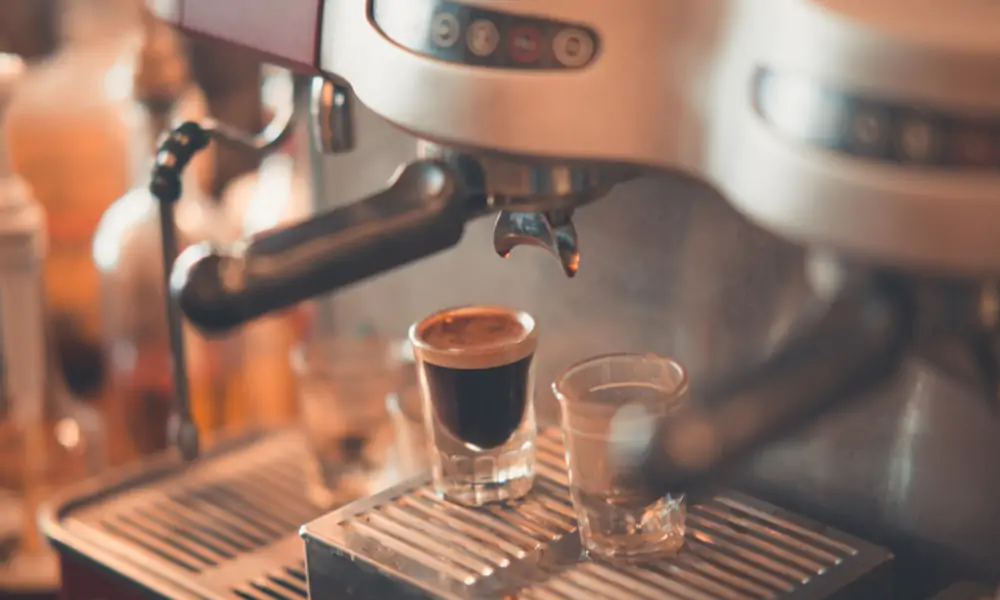
For some, there’s coffee and then there’s espresso, the ultimate experience that takes coffee making to a different level altogether. While making a latte at home may take a hell of a lot of time with freshly ground beans, tamping the grounds, pulling the shots, frothing the milk, and assembling the final drink, it’s worth it!
If you wish to try your hand at espresso, you may choose from the four different types of espresso makers available in the market – pump-driven, piston-driven, steam-driven, and air-pump-driven.
Grind size: Fine
Ratio: 18 grams in 36 grams of water
Brewing time: 25 to 35 seconds
Flavor: rich and delicious
What I like about Espresso
It delivers the best quality of coffee you have ever tasted. Once you taste an espresso, there’s no looking back. The espresso maker can cater to high volumes and have as many as four heads. It brews coffee much faster than the traditional methods.
What I don’t like about Espresso
It takes a lot of preparation time that includes grinding the beans and tamping the bed of coffee grounds. To brew an espresso, the barista needs good training so it’s not something you can do casually at home. You need to be a pro!
8. Single Serve Coffee Maker
This is perhaps the most common of the different ways to make coffee at home. Keurig stands tall as the most preferred brand that offers single-cup brewing machines for homes and offices. The single-serve coffee maker is the go-to way for people who don’t have a lot of time.
You just need to fill up the tank with water and put coffee grounds in the pod. When you turn on the coffee machine, a pump sucks in water, heats it to the right temperature, and forces it through the ground coffee to release the flavor.
Grind size: Fine to Medium
Ratio: 1:16
Brewing time: Less than 2 minutes
Flavor: rich and delicious
What I like about Single Serve Coffee
This is a no-brainer because the speed and convenience with which you can make coffee with a single server are invincible. The reusable K-cup filters allow you to try a variety of coffee flavors. With so many brands and models available, it is possible to find an equipment that suits your needs, fits in your kitchen and falls within your budget.
What I don’t like about Single Serve Coffee
The single K-Cup reusable filters are expensive and they don’t hold enough coffee grounds to offer the right water to grounds ratio. Unlike the traditional methods, the water does not get hot enough resulting in under extraction. The coffee may taste mild with delicate flavors.
Bonus: Smart coffee makers
The smart coffee makers are the advanced versions of single-serve brewers and they are app-controlled. You just need to add water and beans to the brewer the night before and your morning cup of Java will be ready when you order it from the bed.
Most of the drip coffee makers can be pre-set to start brewing at a specific time, but smart coffee makers do not need a pre-set brew time. You are free to control it with your app anytime! Some smart coffee makers are also compatible with Alexa to make it easier to brew coffee from any room.
Different Ways to Make Coffee: 7 Top Tips
- Always buy fresh, whole coffee beans and grind them at home to get the full flavor. If you are buying pre-ground coffee, you are restricting your experience because coffee reaches its peak flavor only days after it is roasted. The flavors start depleting thereafter.
- The flavor of your coffee is highly influenced by when you grind beans so make sure you do it just before brewing to get full flavors. According to experts, coffee starts losing its flavor as soon as you finish grinding. To get best results, grind on-spot before brewing!
- To keep your coffee beans fresh for a longer time, make sure you store it properly in a vacuum-sealed container with just one valve or opening. Most coffee connoisseurs prefer the mason jars.
- To extract full flavor, you must brew at the right temperature. Unfortunately, most of the automatic drip machines don’t achieve the optimal brewing temperature which is between 195 and 205 degrees Fahrenheit. To avoid this, you may consider pre-boiling water before adding it to the tank.
- To make coffee correctly, make sure you measure the grounds by weight instead of considering the volume. The key to consistently making the perfect cup of coffee every time is to do away with variables and always use the same amount using a digital scale. The ideal ratio to make a strong cup of Joe is 1:20.
- Pre-infusing coffee grounds is a critical step skipped by most automatic coffee makers and this inhibits the full extraction. The manual pour over coffee cones usually come with a pre-infusion that helps the grounds release any leftover carbon dioxide gas to make a strong brew.
- Finally, another important and most overlooked aspect of coffee making is the quality of water used. This can heavily impact the flavor of the coffee, resulting in an under-extracted brew. Using hard water will also build up deposits that are hard to clean.
Also, avoid using distilled or filtered water as they force water to leach minerals out of the machine’s metal parts. Your best bet would be bottled water, which is not heavily filtered or too infused with minerals.
Different Ways To Make Coffee: The Final Word
While there are high standards set for the purely extracted perfect cup of Joe, the beauty lies in the fact that you can experiment with different ways to make coffee at home to adapt to your style and preferences.
With so many different coffee-making equipment and accessories available, it is up to you how you wish to brew coffee at home. Before buying any equipment, make sure you compare the brands and read the customer reviews online.
I personally prefer espresso on relaxed weekends or when I wish to show off my coffee-making skills to guests. On other days, I am better off with the smart coffee maker that lets me brew a morning cuppa, afternoon fix, or late-night jitter juice without raising a finger!

This is a really comprehensive post. I think I will go with the Chemex method. It looks simple and seems not going to be requiring much equipment. I just hope it produces the quality of coffee I will like.
I will share my experience anyway 🙂